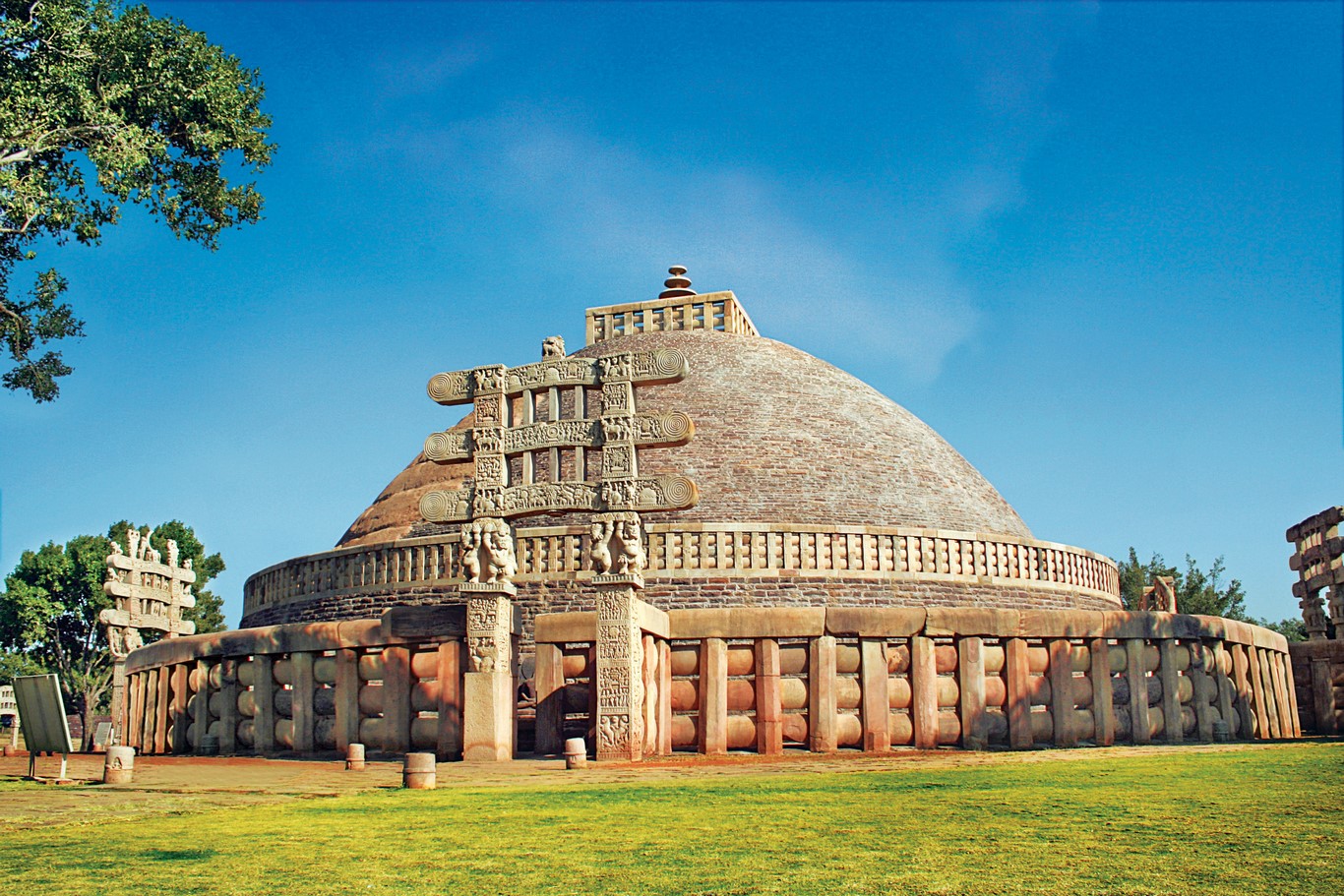
ABOUT THE
Attraction
Home to over 50 monuments, Sanchi in Raisen district is located 48 km northeast of Bhopal, Madhya Pradesh. Praised as the oldest Buddhist sanctuary in existence, its monolithic pillars, stupas, palaces, temples and monasteries all spread Buddha’s philosophy through their art and architecture. Mauryan Emperor Ashoka, in 262 BC, embraced Buddhism to wash away the guilt of the sins he had committed in Kalinga. As penance, he then commissioned the construction of what we know today as the Great Stupa (Mahastupa) in 3rd century BCE. Sanchi began developing as a Buddhist centre following this and over the centuries further stupas and monuments were created. It faced a decline around the 13th century and was forgotten till a British army officer re-discovered it in 1818. Traditionally, stupas hold relics of Buddha or influential Buddhist monks. At the same time, the structures also explain how Buddha achieved enlightenment. The Sanchi Stupa is one such exemplary stupa to be enjoyed. Apart from that, the Great Stupa, a designated UNESCO World Heritage Site, is one of the best conserved stupas in India. Its nucleus is a simple hemispherical brick structure built over the relics of the Buddha and crowned by the chatra (a parasol-like structure) intended to honour and shelter the relics. Constructed during the rule of the Shungas were Stupas 2 and 3. The relics of Sariputra and Mahamoggallana, disciples of Buddha, are said to be placed in Stupa No 3.Relics in Sanchi carry mainly two themes—the miracles done by Buddha and illustrations of the Jataka tales. One can also witness the evolution of temple architecture with the Gupta Temple in the Stupa premises.There are a number of stupas within a range of few kilometres from Sanchi, including Satdhara, Bhojpur, Andher and Sonari. Apart from the stupas, visitors can also visit the Bija Mandal, Udaygiri Caves, Chetiyagiri Vihara and the Toranas. The Toranas are gateways constructed around the Great Stupa, facing the four directions, and all of them carry narratives of various scenes from Buddha’s life, as well as events after his death, in particular the War of the Relics and efforts by Ashoka to spread the faith.The Archaeological Survey of India has undertaken repair work at Sanchi since 1996. They also maintain a site museum there. Displays include the lion capital of the Ashokan pillar and metal objects used by the monks.
HOW TO
REACH
By Bus
Sanchi is at a convenient distance from Bhopal (46 km), Vidisha (10 km) and Indore (232 km)
By Train
The nearest railway station is in Bhopal, at a distance of 47 km. One can hire a cab from there.
By Air
The nearest airport is Raja Bhoj in Bhopal. Sanchi lies 55 km north-east of the Bhopal airport.
OTHER ATTRACTIONS

Deur Kothar
Deur Kothar is an archaeological site known for Buddhist stupas that were discovered in 1982. These stupas date back to the Mauryan dynasty and were declared a monument of national importance in 1988.
Dharmrajeshwar
The complex houses the ruins of a vihara, stupa and chaityas. These caves are cut into the coarse laterite rock of the Chandanagiri hill. The series of 14 rock-cut Buddhist caves from the 7th century.


Sirpur
Excavations have uncovered 12 Buddhist viharas and monolithic statues of Buddha along with other structures and idols.